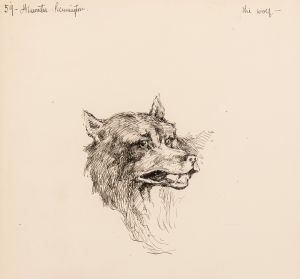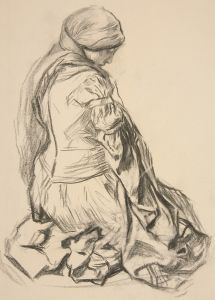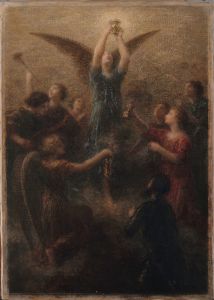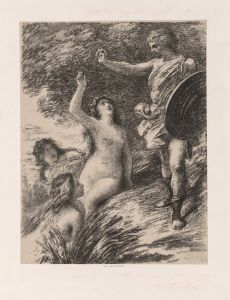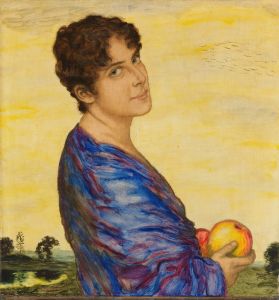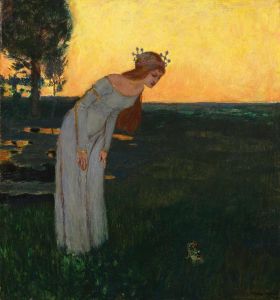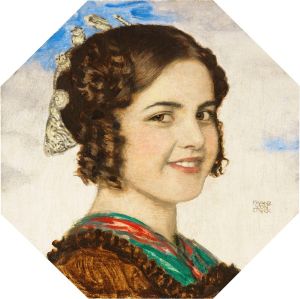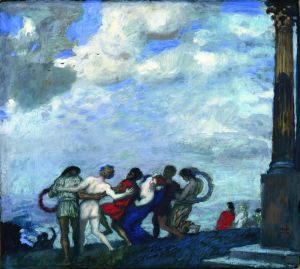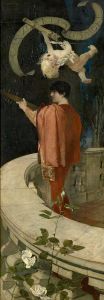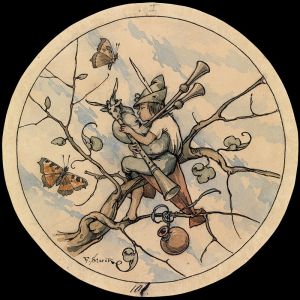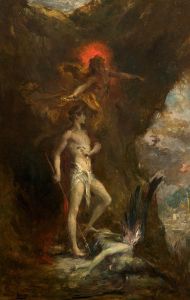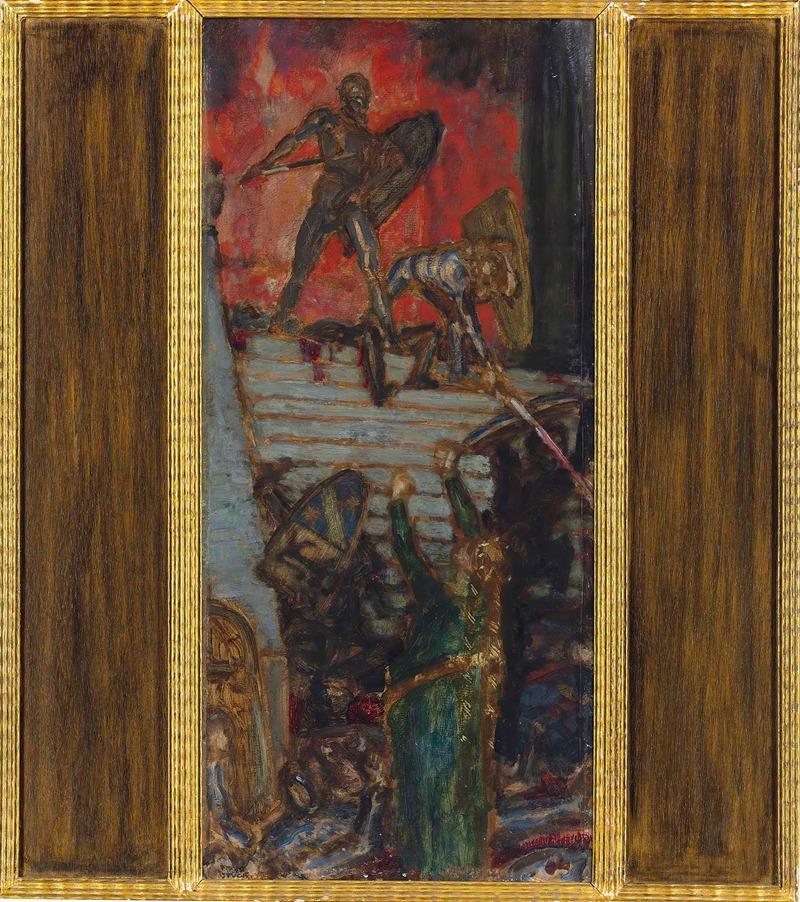
Der Nibelungen
A hand-painted replica of Franz von Stuck’s masterpiece Der Nibelungen, meticulously crafted by professional artists to capture the true essence of the original. Each piece is created with museum-quality canvas and rare mineral pigments, carefully painted by experienced artists with delicate brushstrokes and rich, layered colors to perfectly recreate the texture of the original artwork. Unlike machine-printed reproductions, this hand-painted version brings the painting to life, infused with the artist’s emotions and skill in every stroke. Whether for personal collection or home decoration, it instantly elevates the artistic atmosphere of any space.
Franz von Stuck's painting "Der Nibelungen" is a notable work by the German symbolist artist, who was active in the late 19th and early 20th centuries. Stuck, born in 1863 in Tettenweis, Bavaria, was a prominent figure in the Munich Secession, an art movement that sought to break away from the traditional academic art styles of the time. His work often explored mythological and allegorical themes, characterized by a distinctive use of symbolism and a dramatic, sometimes dark, aesthetic.
"Der Nibelungen" is inspired by the epic Germanic saga, the Nibelungenlied, which is a medieval epic poem that tells the story of dragon-slayer Siegfried, his murder, and the subsequent revenge by his wife Kriemhild. The Nibelungenlied is a cornerstone of German literature and has been a source of inspiration for many artists, composers, and writers, including Richard Wagner, whose famous opera cycle "Der Ring des Nibelungen" is based on the same legends.
Stuck's interpretation of the Nibelungen saga reflects his interest in the themes of heroism, betrayal, and tragedy. His painting style is marked by a strong use of color and light, creating a sense of drama and intensity that captures the epic nature of the story. Stuck was known for his ability to convey complex narratives and emotions through his art, often focusing on the psychological aspects of his subjects.
In "Der Nibelungen," Stuck employs his characteristic use of symbolism to convey the underlying themes of the saga. His work often features a blend of realism and fantasy, with figures that are both idealized and expressive. This approach allows him to explore the deeper meanings of the myth, beyond its surface narrative. The painting likely includes elements that reference key moments or characters from the Nibelungenlied, though specific details about the composition and visual elements of "Der Nibelungen" are not widely documented.
Franz von Stuck's contributions to the art world extend beyond his paintings. He was also a sculptor, architect, and teacher, influencing a generation of artists through his role as a professor at the Academy of Fine Arts in Munich. His home and studio, the Villa Stuck, is now a museum dedicated to his life and work, showcasing his diverse artistic talents and his impact on the art of his time.
While "Der Nibelungen" is one of many works by Stuck that draw on mythological themes, it exemplifies his ability to reinterpret classic stories through a modern lens, making them accessible and relevant to contemporary audiences. His work remains an important part of the symbolist movement and continues to be studied for its innovative approach to narrative and form.
Overall, Franz von Stuck's "Der Nibelungen" is a testament to his skill as an artist and his deep engagement with the cultural and literary heritage of Germany. Through his unique style and thematic focus, Stuck has left a lasting legacy in the world of art, capturing the imagination of viewers with his powerful and evocative interpretations of myth and legend.





